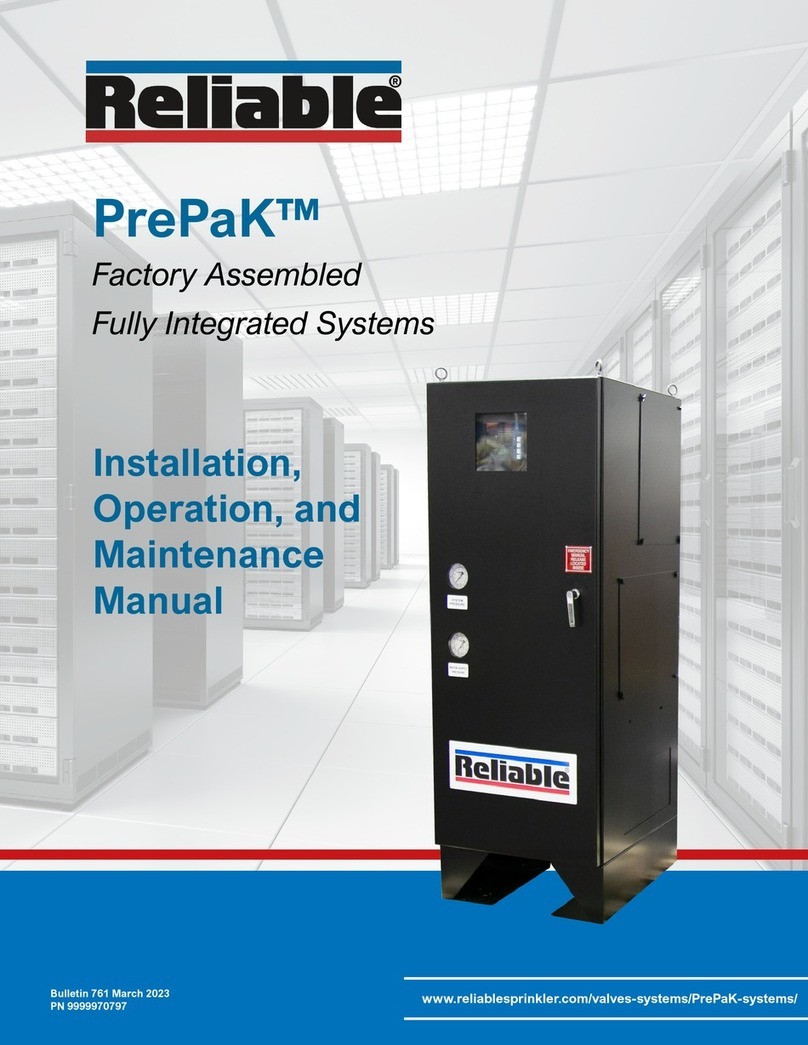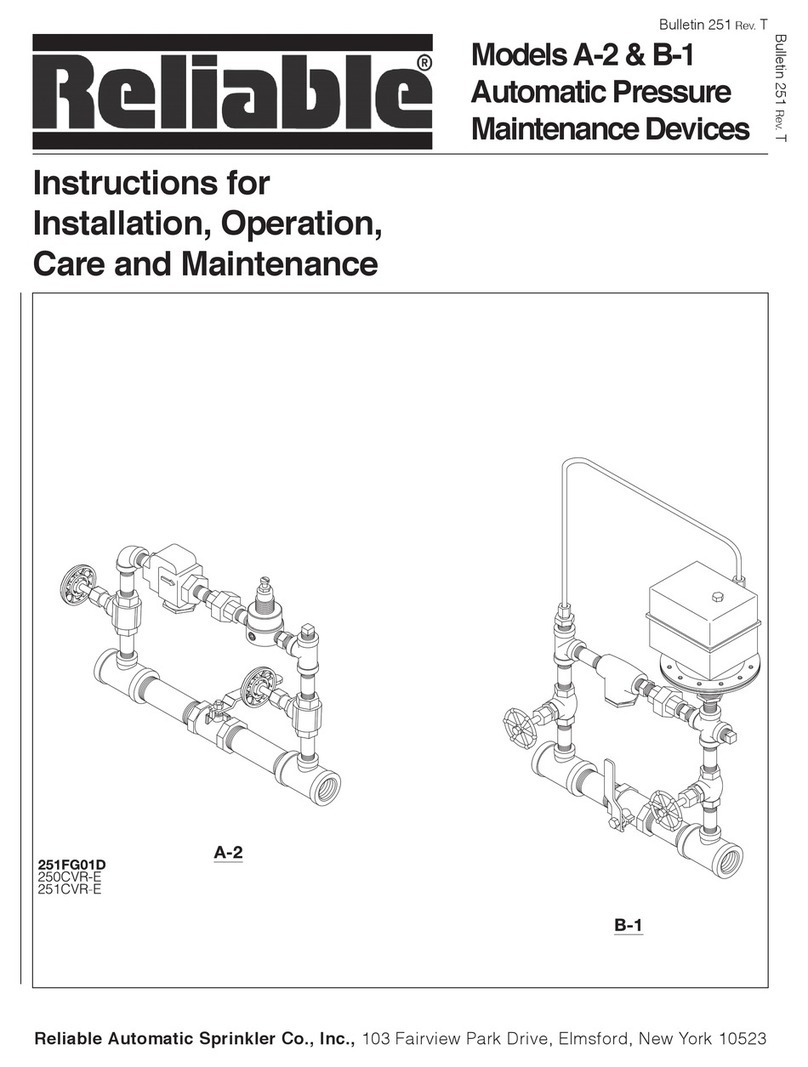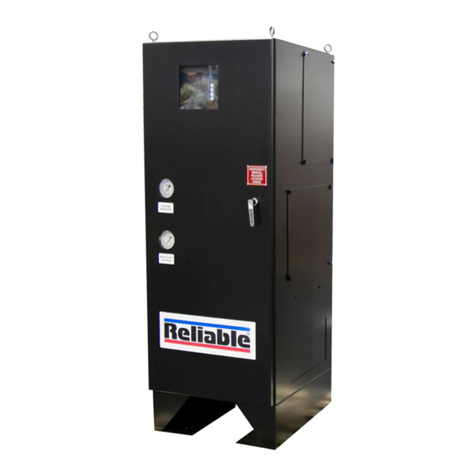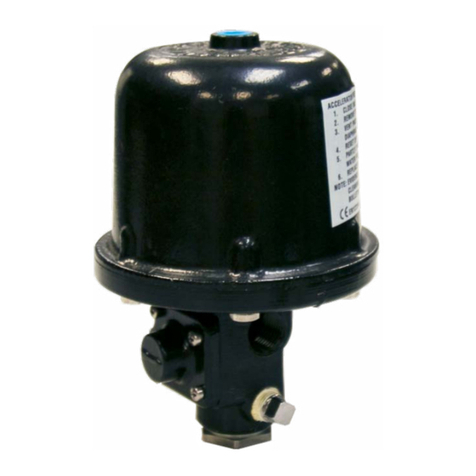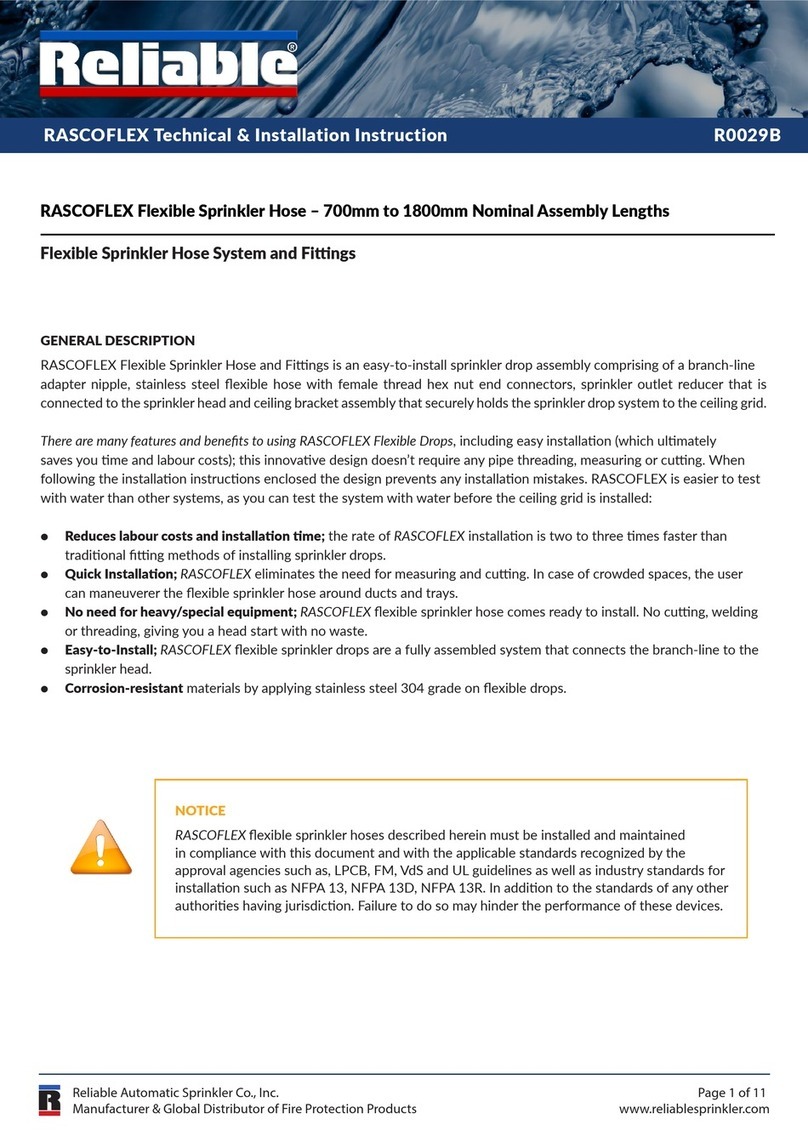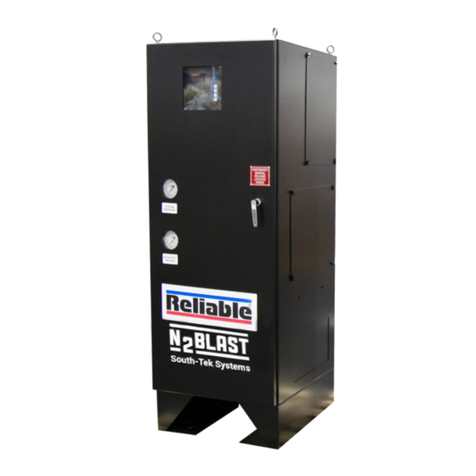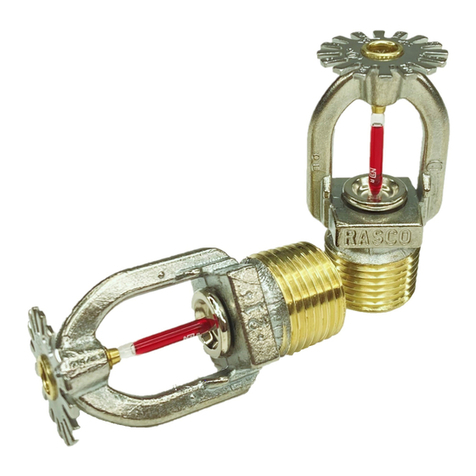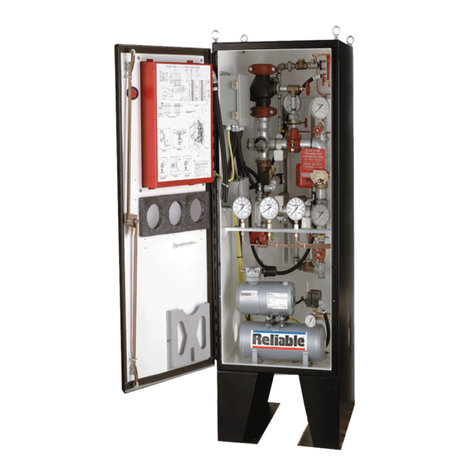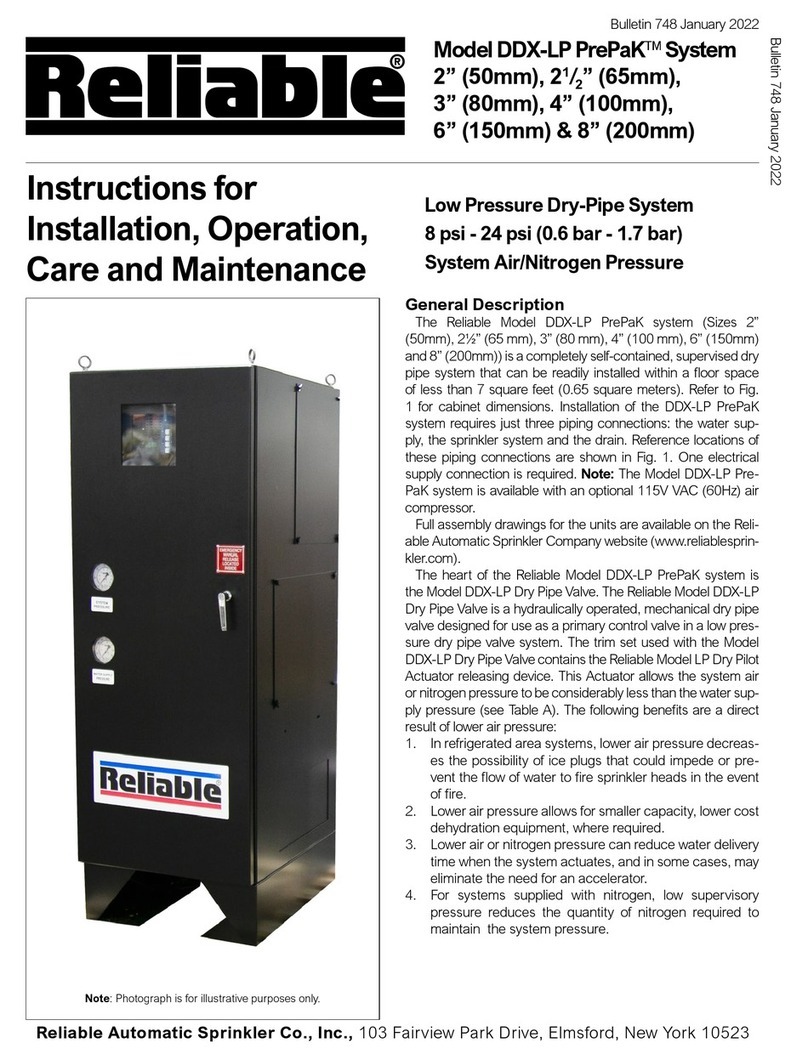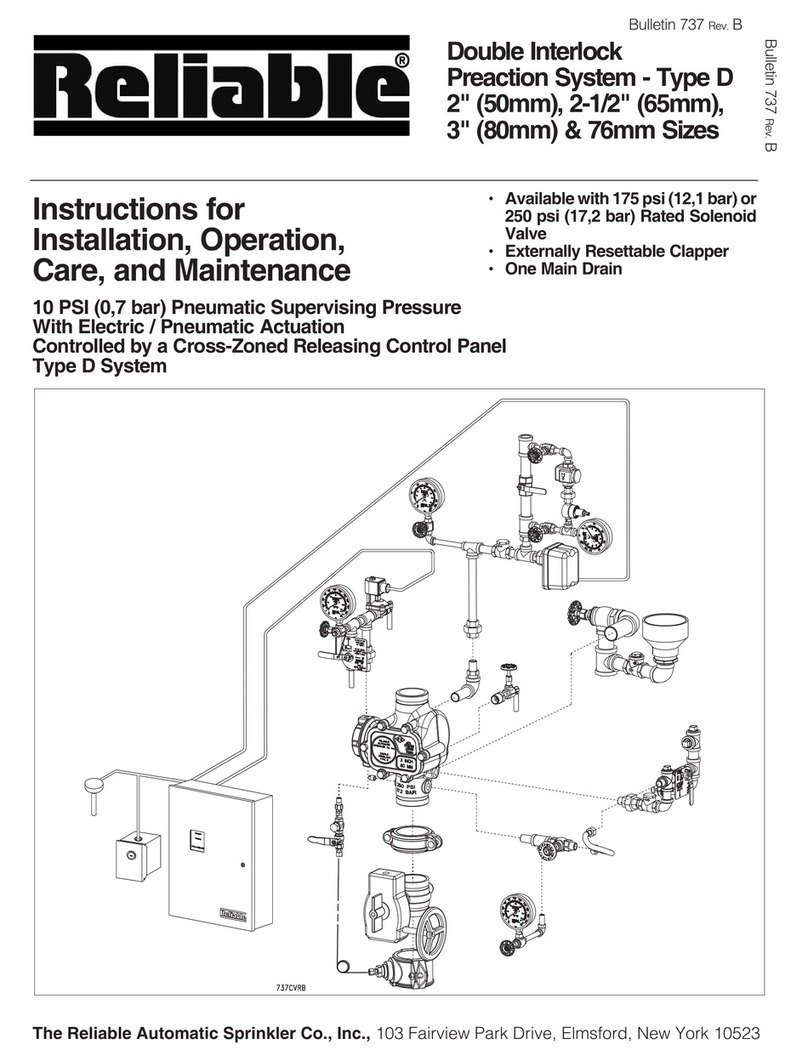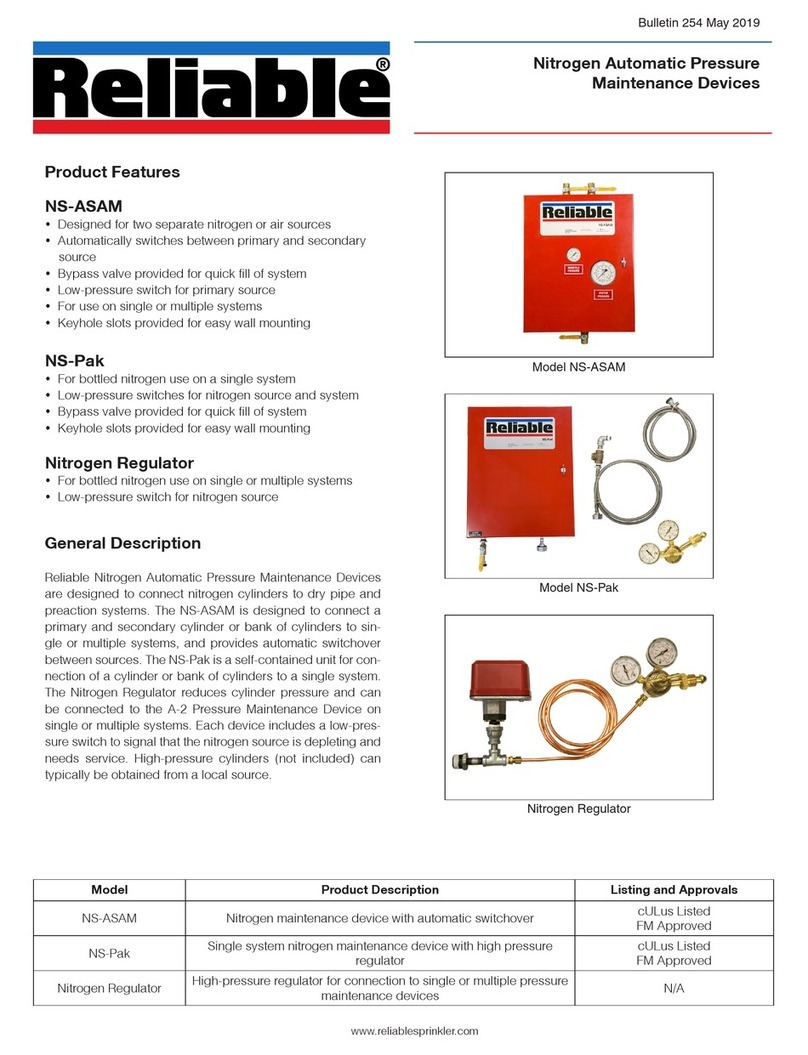
3.
Installation
Model H 1½” (40mm) Deluge Riser Assembly is factory as-
sembled as illustrated in Figure 1. The only piping connections
required at the time of installation are an appropriate water sup-
ply connection, the system piping connection and a ¾” NPT
(R¾) drain line connection. Installation is vertical as illustrated.
Electrical connections are required from a releasing control
panel to the solenoid valve, supply water control valve super-
vising switch, and the water flow alarm pressure switch. Refer
to Bulletin 700 for further instructions when making these con-
nections to the Potter PFC-4410-RC Releasing/Control Panel
used with Reliable Special Hazards & Special Systems. Fea-
tures and options available for Electrical Deluge and Preaction
Systems, including fire detection means, are described in Bul-
letin 700.
Resetting Deluge Riser Assembly
Refer to Figures 1 & 2
Close the control valve, Item 1.
Open drain valve, Item 3, and emergency release
station, Item 2, and drain system.
Open all drain valves and vents at low points through-
out the system, closing them when flow of water has
stopped.
Inspect and replace any portion of the detection sys-
tem subjected to fire conditions.
Electric actuation - open the solenoid valve, Item 4, by
operating a detector or an electric manual emergen-
cy station. After residual water has drained through
the solenoid valve, cause it to close by resetting the
detector or manual station; and thereafter, the Re-
leasing/Control Panel. Refer to Bulletin 700, “Special
Hazards & Special Systems” for details.
Close the emergency releasing station, Item 2. Open
slightly the control valve, closing drain valve, Item
3, when water flows from it. Close the control valve
again and observe supply pressure gauge, Item 6, for
any drop in pressure. No pressure drop confirms all
valves are leak tight and the Riser Assembly is prop-
erly set then the control valve, Item 1, is reopened.
Check that the control valve is fully open, and prop-
erly supervised.
Inspection and Testing
Refer to Figures 1 & 2
Water supply - be sure the valve, Item 1, controlling
water supply to the Deluge Riser is open fully and
properly supervised in this position.
Other valves - check that valves, Items 2 , 3 and 37,
are closed and not leaking, by performing Step 6
above.
The automatic drain valve, Item 38, monitors internal
leakage. Push in on its plunger to be sure ball check
is off its seat. If no water appears, the Deluge Riser
Assembly is leak tight.
1.
2.
3.
4.
5.
6.
7.
1.
2.
3.
Operation test - Open the solenoid valve, Item 4, us-
ing the procedure in Step 5 above. Note: Operation
test will cause full flow into the deluge system unless
the control valve is throttled or closed prior to per-
forming this test.
Reset the Riser Assembly (Steps 1-7 above).
Testing Detection System Without Flow Through
Deluge Riser
Close the control valve, Item 1.
Operate detection system - refer to Bulletin 700.
Operation of the detection system must result in a
sudden drop of water pressure indicated on supply
pressure gauge, item 6. When gauge drops to zero,
open drain valve until all water above the control
valve drains away.
Reset detection system - reverse operations per-
formed in Step 2 above. The solenoid valve closes
when the Releasing/Control Panel is reset.
Reset the Riser Assembly (Steps 1-7 above).
Maintenance
Reliable Deluge Riser Assemblies and associated equip-
ment shall periodically be given a thorough inspection and
test. NFPA 25 provides minimum requirements for inspection,
testing and maintenance. The Deluge Riser should be tested,
operated, cleaned and inspected at least annually and parts
replaced as required.
Maintenance Procedures
Refer to Figures 2 & 3
Steady water flow into the system, as evidenced by dripping
at the automatic drain valve, is caused by water leaking past
the solenoid valve or past the emergency station valve. To lo-
cate and correct the trouble, proceed as follows:
Maintenance of Solenoid Valve
Caution: Do not expose plastic or elastomeric ma-
terials to any type of commercial cleaning
fluid. Parts should be cleaned with a mild
soap and water solution.
1.1 Disassemble valve as per the Disassembly
Instructions on page 6. Remove extrane-
ous matter. Clean parts in a mild soap and
water solution.
1.2 Examine surface of the plunger seal and
diaphragm. If damaged, replace plunger
or diaphragm.
1.3 Inspect orifices in the body, cover, and dia-
phragm for nicks or dirt. Clean as neces-
sary. Damage may require a new valve or
replacement parts.
1.4 Examine surfaces of the diaphragm or seal
in contact with the main orifice. Clean if
dirty or replace if damaged or worn.
1.5 Check all springs. If broken, replace.
4.
5.
1.
2.
3.
4.
5.
1.
